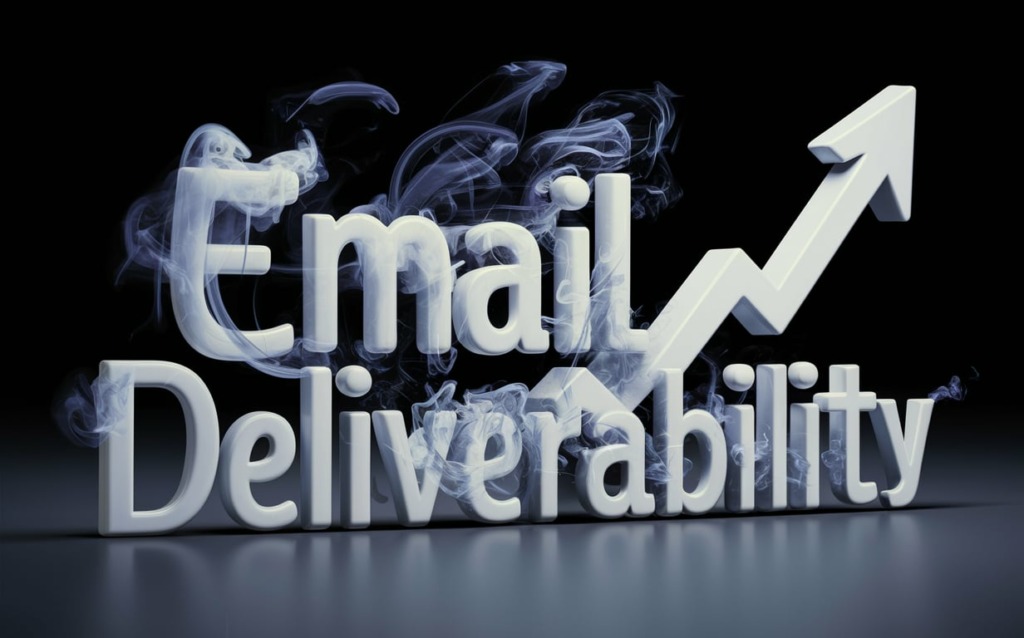You spend hours meticulously crafting the perfect email marketing campaigns. Your messaging is tight. The offers are enticing. The designs are flawless. Then you hit send, anticipating those coveted opens and clicks.
Chances are your emails are falling victim to spam filters, aggressive inbox providers, authentication issues, damaged sender reputation, or some other deliverability roadblock. You’re invested in success, yet low email deliverability silently sabotages ROI.
The good news? Achieving excellent inbox placement isn’t about finding some deliverability silver bullet. It simply requires learning proven frameworks, monitoring key metrics, and refining over time based on data.
This comprehensive guide will take you from email deliverability beginner to expert. You’ll learn how leading senders tackle obstacles and consistently reach inboxes. With a strategic, patient approach, your future emails will get where they belong – in front of engaged recipients.
Let’s get started unlocking the secrets ofemail deliverability.
What is Email Deliverability and Why Does it Matter?
Email deliverability refers to the likelihood that your email marketing messages will reach your subscribers’ inboxes, rather than ending up in spam folders or being bounced back to you. It’s one of the most important metrics for gauging the success of email campaigns.
Defining Email Deliverability
At its core, email deliverability measures how good you are at getting your emails into the inboxes of your target audience. It is calculated as the percentage of total emails sent that arrive in subscribers’ inboxes and are not blocked or filtered as spam.
A high deliverability rate means your emails are reliably reaching subscribers, while a low rate indicates issues exist that are preventing your messages from getting through.
Importance of High Email Deliverability Rates
Deliverability matters because you can have the most captivating email content and best list of subscribers, but it is all for naught if your emails never even make it to inboxes.
Some key reasons high deliverability is crucial:
- Higher open and click-through rates: Delivered emails logically have a greater chance of being opened and acted upon.
- Improved sender reputation: Consistently high inbox placement builds trust and credibility with ISPs.
- Better subscriber relationships: Subscribers expect and rely on receiving your emails if they signed up.
- Increased conversions and ROI: More inbox delivery means more visibility for calls-to-action.
Simply put, no other email marketing metrics can be optimized if your deliverability is poor. That’s why monitoring and improving it should be priorities.
Email Deliverability vs. Email Delivery – What’s the Difference?
These two terms are related but distinct:
- Email delivery focuses on the successful sending of emails from your servers to recipients’ email providers. As long as messages aren’t bouncing, delivery is occurring.
- Email deliverability is about what happens next—whether those delivered emails end up in inboxes or are filtered into spam/promotions folders.
Think of delivery as step one and deliverability as step two. Your emails can have a flawless delivery rate but then have major inbox placement issues. That’s why both metrics matter when gauging email campaign health.
The key takeaway is that excellent delivery on its own doesn’t guarantee good deliverability. But naturally, if emails aren’t being delivered at all, then inbox placement won’t even have a chance.

12 Proven Ways to Improve Your Email Deliverability in 2025
Getting your emails reliably delivered to subscriber inboxes can seem mystifying and out of your control. But the truth is that many proven strategies exist to directly improve your sender reputation and email deliverability.
Here are 12 impactful tactics to start implementing for higher inbox placement:
Authenticate Your Domain (SPF, DKIM, DMARC)
Setting up proper domain authentication is an essential starting point for improving deliverability. SPF, DKIM, and DMARC help prove to ISPs that you are a legitimate, authorized sender and not a spammer.
- SPF verifies that emails are being sent from IP addresses authorized by your domain.
- DKIM digitally signs each email to confirm it hasn’t been altered in transit.
- DMARC aligns SPF and DKIM to determine handling for non-compliant messages.
Together, implementing these protocols ensures your “From” address matches your domain and builds trust. Your email host or provider can guide you through proper setup.
Monitor and Maintain Your Sender Reputation
Your domain and IP reputation is a key factor ISPs use to filter emails. Higher reputations lead to higher inbox placement rates.
Consistently monitor your sender score via tools like SenderScore](https://senderscore.org/) or [MXToolbox.
If your score drops, take corrective actions like:
- Removing hard bounces and inactive addresses from your lists
- Adjusting sending volume and frequencies
- Testing different sending IPs
- Temporarily pausing mailings
Be proactive about maintaining a strong domain reputation to avoid future deliverability headaches.
Leverage Quality Email Lists and List Hygiene
The quality of your email subscribers directly impacts deliverability in multiple ways:
- Higher bounce rates from invalid/inactive addresses hurt sender reputation.
- Engaged recipients improve sender reputation by opening and clicking.
- Irrelevant messaging annoys recipients and leads to spam complaints.
That’s why best practices like permission-based opt-ins, list cleaning, and aggressive list maintenance are musts.
Regularly:
- Scrub for typos, duplicates, etc.
- Verify addresses are valid
- Remove hard bounces
- Segment based on engagement
This ensures your focus is on reachable and interested subscribers.
Carefully Design and Test Email Content
Even if your list is flawless, undesirable content can sabotage deliverability. Email providers scan messages for spam triggers like:
- Excessive punctuation and CAPS
- Spammy keywords like “Free or “Deal”
- Text-heavy, sales-focused copy
- Overuse of images rather than text
Craft relevant, personalized content free of spam triggers. Also:
- Include options to unsubscribe and contact you
- Ensure mobile optimization
- Use calls-to-action wisely
Use spam testing tools to refine content before sending at scale.
Warm Up New IP Addresses
When starting campaigns from a new IP address, don’t send large volumes immediately. Recipient servers may flag you as a spammer.
Instead, gradually warm up new IPs by:
- Beginning with small daily email batches.
- Slowly increasing the number of emails per day.
- Closely monitoring spam complaints and bounces.
- Keeping early content relevant for engaged subscribers.
This conservative approach builds positive deliverability history for unfamiliar IPs.
Leverage Email Authentication
Properly implementing SPF, DKIM, and DMARC email authentication protocols is imperative for deliverability.
- SPF confirms emails originate from authorized servers.
- DKIM proves emails are authentic and unaltered.
- DMARC aligns SPF/DKIM to set handling policies.
Consistently authenticated emails signal to ISPs that you send legitimate emails. Work with your email service provider to configure these protocols.
Track Engagement and Optimize Based on Feedback
Monitoring reader engagement provides valuable deliverability insights. Low open and click rates often foreshadow future spam filtering issues.
Use engagement tracking to:
- Identify less compelling content performaning poorly.
- Find subscriber segments ignoring your emails.
- See if particular emails have unusually low engagement.
Then optimize future emails and targeting strategies based on these lessons. Improved engagement directly strengthens your sender reputation.
Ensure Easy Unsubscribes
While losing subscribers isn’t ideal, forcing recipients to stay subscribed by hiding unsubscribe links will tank your sender reputation.
Make opt-out simple:
- Use single-click unsubscribe links in all emails.
- Monitor and honor all unsubscribe requests promptly.
- Include postal address for subscribers to remove consent.
This reduces spam complaints and builds trust with ISPs as an ethical sender. Valuing subscriber relationships boosts long-term deliverability.
Send at Optimal Times and Frequencies
Both the timing and frequency of your email sending impacts inbox placement.
- Avoid large volumes at once, which can trigger spam filters.
- Consider the preferences recipients signed up for when sending.
- Test how different days of the week and times of day perform.
Overall, spread emails evenly over days and weeks while aligning with subscriber expectations. This maximizes the likelihood of clearing spam filters.
Segment Your Lists for Relevance
Sending blanket emails to everyone on your list is a recipe for spam complaints and unsubscribes.
Instead, leverage segmentation:
- Divide subscribers into groups based on interests.
- Send content specifically relevant to each group.
- Personalize messages with subscriber details.
This targeted approach keeps subscribers engaged, improving your domain reputation.
Monitor and Address Bounces Swiftly
Hard bounces hurt your sender reputation, so identifying and removing bounced addresses quickly is key.
- Classify bounces as hard vs. soft. Soft bounces may resolve themselves.
- Check bounced messages for troubleshooting clues.
- Determine if issues are address-specific or more widespread.
- Delete hard bounced addresses from your lists.
- Adjust any processes that may be causing bounces.
Staying on top of bounces limits their deliverability impact.
Choose the Right Email Service Provider
Not all email services are created equal when it comes to navigating deliverability challenges.
Seeks providers offering:
- Established in-house deliverability experts.
- Proactive deliverability monitoring and optimization.
- Feedback on reputation issues impacting your account.
- Solutions for warming up new IPs.
- Assistance crafting engaging and compliant emails.
Having an ESP partner fully committed to your deliverability success makes a difference.
Final Thoughts on Maximizing Email Deliverability
Achieving strong inbox placement and deliverability takes ongoing focus across your sending domain, content, and subscribers.
But diligently following proven best practices pays dividends in the form of more reliably reached inboxes, greater subscriber trust, and reduced headaches when sending emails.
Treat inbox placement improvement as an iterative, measurable process. Be patient, stay vigilant, and keep refining based on hard data.
With time and commitment to these principles, you can get your important emails into the inboxes of more target subscribers.

Email Deliverability Tools and Testing Best Practices
Beyond general deliverability best practices, leveraging testing and monitoring tools can provide objective data revealing how your emails are performing.
Dedicated deliverability tools empower you to diagnose issues and refine both content and sending practices. Here are impactful ways to leverage them:
Leverage Seed List Testing
Seed lists contain a sample of controlled email addresses you can safely send test emails to before full deployments.
Benefits of seed list testing:
- Verify inbox delivery before public sending.
- Check deliverability across different email providers.
- Confirm rendering on various devices and clients.
- Adjust content that may be flagged as spam.
Seed listed addresses should represent your actual target domains. Test a range of recipients like Gmail, Outlook, Yahoo, etc.
Run Spam Tests on Email Content
Spam testing tools check how your email’s content and links perform against various spam classifiers before sending.
Common options include Folderly](https://folderly.com/spam-words-checker), Mail-Tester, and [SpamAssassin.
Test early in your workflow to:
- Detect dangerous keywords flagging emails as spam.
- Check if links are redirecting properly.
- Find any harmful metadata attached to images.
- Identify any blocked hosts referenced.
Refine content until it passes spam filter checks. Don’t guess – let tools confirm.
Check Domain/IP Reputation and Blacklists
Services like MXToolbox](https://mxtoolbox.com/) and [SenderScore offer free reputation checks revealing:
- Global blacklisting status.
- Recent spam complaints.
- Email authentication records.
- Historical sending volumes.
Monitoring via these tools helps you:
- Avoid sudden blacklistings sabotaging deliverability.
- Understand current reputation and take corrective actions if needed.
- Verify DNS records are correctly configured.
- Diagnose other limiting factors flagged.
Be proactive with regular reputation checks before major sends.
Test Your Authentication Setup
Even if email authentication like SPF, DKIM, and DMARC is implemented, occasional issues can arise.
Use authentication testing tools to:
- Confirm records are still valid and properly formatted.
- Check that your final emails are aligning with protocols.
- Detect if any authorized sending IPs are incorrectly flagged.
- Assess effectiveness of existing authentication.
Plug holes in your authentication safety net by routinely testing.
Use Dedicated Deliverability Monitoring Tools
Tools like Folderly provide deliverability reports revealing:
- Your current inbox placement rates across major ISPs.
- Specific content flags tripping up filters.
- Authentication issues weakening your sender reputation.
- Blacklist status checks and history.
The insights allow you to:
- Continuously optimize each campaign and email sent.
- Address problems proactively instead of reactively.
- Always know your real-world inbox placement rates.
- Never wonder if future emails will actually reach inboxes.
Make deliverability monitoring central to your overall email success.
Final Thoughts on Email Deliverability Testing
The most successful email marketers invest in thoroughly testing deliverability before and after major campaigns. They also monitor key health metrics continuously.
Putting objective data and actionable insights at the core of your process reduces frustrating guesswork. With testing and monitoring powered by the right tools, your future deliverability can only improve over time.

The Impact of Deliverability on Email Marketing Success
At its core, the success of any email marketing campaign hinges on reaching the inboxes of your target audience. That’s why monitoring and optimizing deliverability should be priorities—the benefits of increased inbox placement are immense.
Higher Open and Click Rates
The most obvious impact of improving deliverability is substantially higher open and click-through rates. After all, recipients can’t open or click emails that went to spam or were bounced.
According to Validity’s 2022 Email Deliverability Benchmark report:
- The average unique open rate for inbox-placed email is over 3X higher than spam-folder placed email.
- The average click-through rate for inbox-placed email is 5X higher than spam-folder placed email.
With inbox placement, your carefully crafted content gets a fighting chance to resonate and motivate action.
Improved Brand Reputation and Trust
Consistent and dependable inbox delivery strengthens your brand’s reputation as a trusted and legitimate sender.
subscribers come to rely on and look forward to your emails arriving safely in their inbox. It builds loyalty and satisfaction knowing your emails are accessible.
Strong deliverability also reinforces your credibility with mailbox providers and anti-spam filters. They come to recognize you as an established sender adhering to best practices.
This reputation asset pays dividends long-term as your brand continues emailing at scale.
Increased Conversions and ROI
Ultimately, the bottom line impact of optimized deliverability is more conversions and increased ROI from email marketing efforts:
- Higher open rates lead to more prospects consuming your content and offers.
- Higher click-through rates result in more prospects visiting landing pages and taking action.
- Improved brand reputation translates to subscribers more willing to trust and engage your business.
Each of these deliverability benefits compounds to drive more measurable business value from the time and money invested into your email campaigns.
Better Relationship Building with Subscribers
At its heart, email marketing is about nurturing lasting subscriber relationships. Deliverability is key to this.
When subscribers receive your emails consistently, they come to rely on you as a sender. It builds familiarity and anticipation around hearing from you.
And you avoid frustration from subscribers wondering where your emails are when they land in spam or don’t appear at all. That breeds disengagement and erodes trust.
By optimizing inbox placement, you become a steadfast sender subscribers want to see in their inbox. Your future emails will be held to a higher standard—one you should strive to maintain.
Final Thoughts on the Impact of Deliverability
Email marketing success goes well beyond creative messaging and a robust list of subscribers—it’s fundamentally contingent on those emails reliably reaching inboxes.
That’s why devote time evaluating your current deliverability rates and leveraging proven strategies to incrementally improve them.
The compound impact on increased opens, clicks, conversions, reputation, and subscriber loyalty is well worth the effort. Treat inbox placement and deliverability as the marketing cornerstones they are.

Final Thoughts on Maximizing Email Deliverability
After reviewing proven strategies and best practices, the key takeaway is that excellent email deliverability relies on an ongoing, meticulous approach.
There is no “set it and forget it” when it comes to your sender reputation and inbox placement rates. You need to remain proactive, patient, and detail-oriented.
Here are final tips for making deliverability gains:
Master the fundamentals
The consensus basics like permission-based opt-ins, list cleaning, engaging content, and spam testing will always remain foundational. Don’t underestimate their impact—do them consistently.
Take a personalized approach
General best practices are a starting point. You still need to closely monitor your own account’s performance and issues. Let data guide your optimization path.
Be patient and persistent
Expect deliverability gains to take concerted time and effort. Keep focusing on small, incremental improvements vs. dramatic shortcuts. Stay patient and committed in your work.
Monitor performance obsessively
The only way to know if your efforts are working is through meticulous tracking across opens, clicks, placements, reputation, etc. Measure results continuously.
Keep exploring new tactics
Don’t become complacent if you see deliverability lift. Continue testing new subject lines, segments, timing, tools, and anything else that may lift results.
Work closely with your ESP
Your email service provider likely has deliverability experts, insights, and tools at your disposal. Collaborate with them extensively.
Make adjustments based on data
Let inbox placement rates, engagement metrics, and other direct feedback guide your optimization path—don’t make decisions based on guesswork.
Commit for the long-haul
Lifting deliverability takes a prolonged commitment across resources, testing, adjustments, and vigilance. Be ready to make this a long-term priority.
Value your reputation above all else
Guard your hard-earned domain reputation fiercely. It is invaluable yet delicate—any slip in diligence can sabotage your sender credibility.
Appreciate the small wins
Not every tactic will produce huge deliverability spikes. But even incremental points of progress accumulate. Celebrate small but viable gains.
Learn continuously
Email filtering algorithms and best practices continually evolve. Stay on top of industry learnings via blogs, reports, classes, and conferences.
The overarching theme is that achieving and maintaining excellent email deliverability calls for an organized, patient, and learning mindset. There are no shortcuts—only meticulous commitment. But the long-term gains for your business are well worth the effort.
With these principles guiding you, your future emails will reliably land where they belong—in the inboxes of your valued subscribers.

Key Takeaways on Improving Email Deliverability
Optimizing your email deliverability relies oncontinuous learning and commitment across many interconnected factors. Here are the key lessons to remember:
- Understand the core difference between delivery and deliverability. Getting to the inbox is step two.
- Monitor and protect your sender reputation at all costs. This is imperative for ongoing inbox placement.
- Leverage quality lists, properly authenticated domains, engaging content, and other proven drivers of deliverability.
- Incorporate rigorous pre-send testing into your workflows including spam checks, authentication checks, seed sends, etc.
- Track metrics meticulously after sending to identify issues and make data-driven optimizations.
- Work closely with your email service provider and leverage dedicated third-party deliverability tools for added insights.
- Remain patient yet persistent. Lifted deliverability takes time and continuous incremental gains.
- Stay educated on evolving inbox provider algorithms and industry best practices. Complacency is dangerous.
Email deliverability can be perplexing but conquerable with commitment to fundamentals, testing, monitoring, adjustments, and protecting your hard-earned sender reputation over the long-term. Use this guide’s lessons as building blocks for future inbox placement gains.
Frequently Asked Questions About Email Deliverability
What is considered a good email deliverability rate?
According to industry benchmarks, an excellent deliverability rate is 90% or higher. 85% is average, and below 70% signals issues likely exist. Target 85% or better inbox placement.
How often should I check my email deliverability?
Ideally, use automated tools for continuous monitoring. But at minimum, run manual tests before major sends and 1-2 times per month to audit performance. Frequent checks prevent surprises.
What happens if my deliverability drops too low?
The lower your deliverability, the fewer emails reach inboxes, cratering open rates, clicks, conversions, and revenue from email efforts. Sustained poor deliverability also damages sender reputation.
What are some quick ways to improve deliverability?
Some relatively fast fixes include adjusting campaigns causing issues, fixing technical problems with DNS or links, and removing problematic email addresses dragging down sender score.
What has the biggest impact on email deliverability?
Your sender reputation is the single most important factor dictating inbox placement. Higher reputation earns trust from ISPs to bypass filters. Guard your reputation fiercely.
How long does it take to improve poor deliverability?
It depends on the issues, but rebuilding a damaged sender reputation can take many months of diligent effort. Preventing problems is faster than correcting them.
Can I automate or outsource improving deliverability?
Many tools help automate testing and monitoring. But human oversight is still required for strategy and refinement. Leverage email experts as an extension of your team.
What else can I do beyond authentication and list cleaning?
Content quality, spam testing, engagement monitoring, seed sending, timing/frequency adjustments, and dedicated deliverability tools all further optimization.
How do I convince others at my company to prioritize deliverability?
Share reports on quantifiable revenue, conversions, and performance being lost due to poor inbox placement. The business impact usually persuades executives.
Where can I learn more about inbox provider algorithms and new deliverability tactics?
Explore industry blogs, conference sessions, deliverability training programs, and reports to stay educated on the latest trends and ISP developments.

